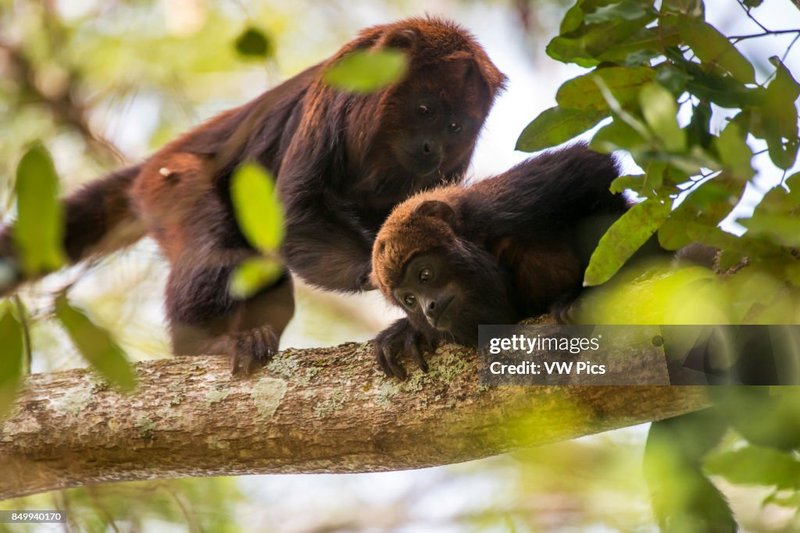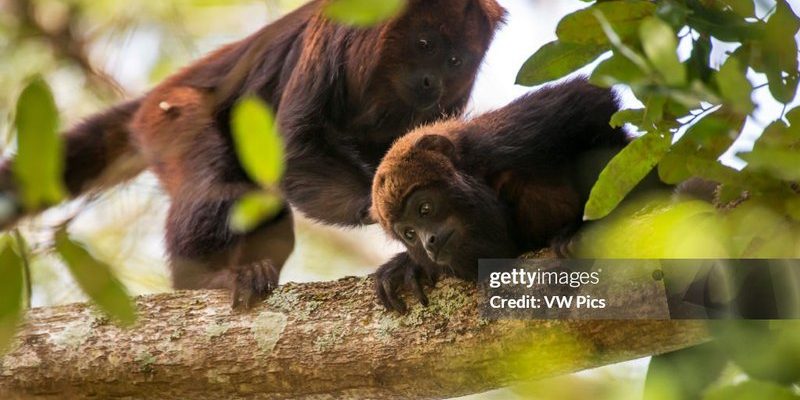
It’s easy to see why people might misunderstand these monkeys. After all, they live in remote tropical forests, far from our everyday lives. But let’s take a moment to peel back the layers of mystery surrounding them. Understanding the truth about *guaribas* not only helps in appreciating them better but also plays a crucial role in their conservation. So, grab your favorite drink, and let’s dive into some of the most common myths about these intriguing creatures!
Myth 1: Howler Monkeys Are All the Same
You might be surprised to learn that there are actually several species of howler monkeys, each with unique characteristics. While they all share the same general howling behavior, they vary significantly in size, color, and habitat.
- Black Howler Monkey: Known for their distinctive black fur, these monkeys are primarily found in Central America.
- Brown Howler Monkey: Found in the Amazon Rainforest, they have a beautiful brown coat and are one of the largest species.
- Colombian Howler Monkey: This species is known for its striking coloration and is native to the forests of Colombia.
When you hear that loud howling sound, it might just be one of these varied species expressing themselves in their unique way! The diversity among howler monkeys is like a vibrant playlist; each song has its own tune, but they all belong to the same genre.
Myth 2: Howler Monkeys Are Dangerous
Another common misconception is that howler monkeys are aggressive or dangerous to humans. The truth is, they tend to be quite shy and prefer to avoid confrontation. Unlike some other primates, they rarely show aggression unless they feel threatened.
Here’s the thing: their loud howls can sound intimidating, but they use these vocalizations mainly to communicate with each other and establish territory. Picture it like an opera singer belting out notes to assert their presence rather than an aggressive shout. They’re not out to get you; they’re just enjoying their time in the trees!
Myth 3: Howler Monkeys Eat Only Leaves
People often assume that howler monkeys are strict herbivores eating solely on leaves. While it’s true that leaves make up a significant part of their diet, they also munch on fruits, flowers, and even seeds.
Imagine being at an all-you-can-eat salad bar but with a few dessert options on the side! Howler monkeys will select their food based on what’s available in their habitat and what’s in season. Their diverse diet helps them maintain their energy levels for their daily adventures, swinging from branch to branch.
Myth 4: Howler Monkeys Are Lazy
You might hear someone say that howler monkeys are lazy because they spend a lot of time resting and lounging in the trees. But hold on! This behavior is actually part of their survival strategy.
Howler monkeys have a slow metabolism, so they conserve energy by taking it easy. They use their time wisely, resting during the hottest parts of the day and being active in the cooler mornings and evenings. Think of them as wise binge-watchers, choosing to relax while saving their energy for the thrilling parts of the day.
Myth 5: Howler Monkeys Can’t Adapt to Their Environment
Another myth floating around is that howler monkeys are not adaptable creatures. In reality, they are quite resourceful! Howler monkeys have been seen thriving in various habitats, from dense rainforests to fragmented areas due to human activity.
Let me explain: when faced with habitat changes, these clever primates can adjust their diet and behavior to fit new situations. Yes, they prefer their natural habitat, but they show remarkable resilience. It’s like being in a new city; you might miss your old place, but you learn to find new favorite spots.
Myth 6: All Howler Monkeys Are Noisy
While howler monkeys are famous for their loud calls, not every individual is a virtuoso of the jungle symphony. Some howler monkeys are surprisingly quiet, especially younger ones or those in smaller groups.
Imagine going to a concert where each monkey has a different level of enthusiasm. Some are louder than others, but it doesn’t mean they’re not enjoying the music just as much! Their vocalizations play a vital role in their social structure, allowing them to communicate and stay connected with their group.
Myth 7: Howler Monkeys Don’t Need Conservation
Lastly, you might think that howler monkeys are doing just fine in the wild, but that couldn’t be further from the truth. Many species of howler monkeys are facing serious threats due to habitat loss, poaching, and climate change.
Conservation efforts are crucial to ensuring these fascinating creatures continue to thrive. Just like needing to care for our parks and natural spaces, we need to advocate for howler monkeys and their habitats. It’s not just about saving a species; it’s about protecting the entire ecosystem they belong to.
Wrapping It Up
There’s so much to learn about *guaribas*, or howler monkeys, beyond the myths that surround them. From their unique dietary habits to their adaptability and social behaviors, these creatures are truly remarkable. Next time you hear a howl echoing through the trees, remember the truth behind the sound. Let’s appreciate these monkeys for what they are and work towards protecting them for future generations. After all, understanding these myths is just the beginning of our journey into the wild world of howler monkeys!

